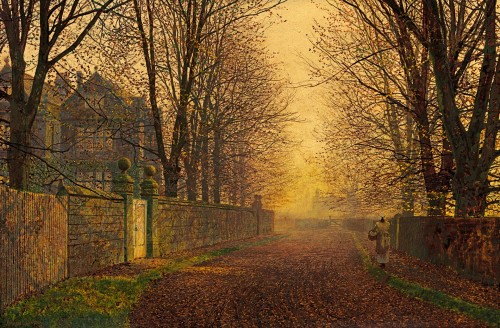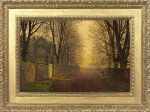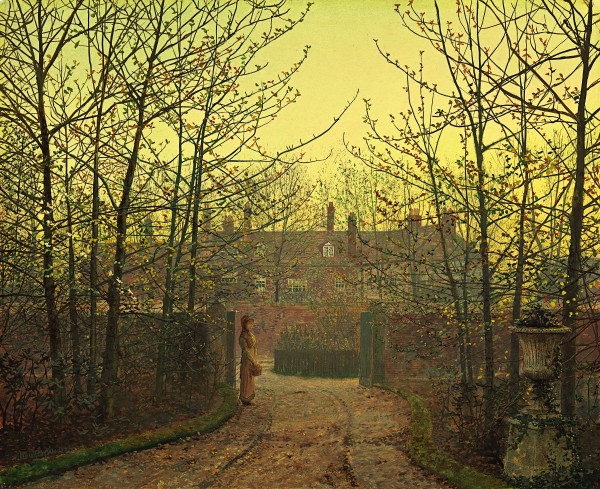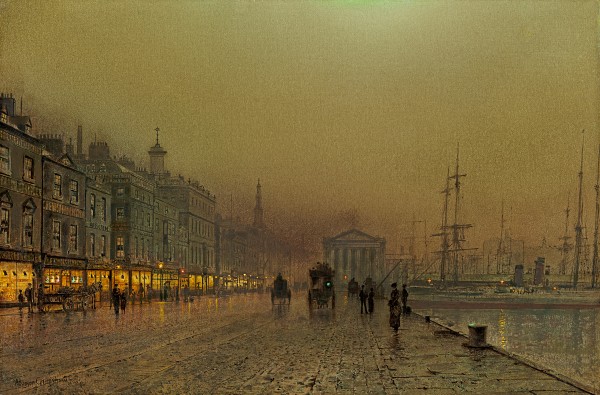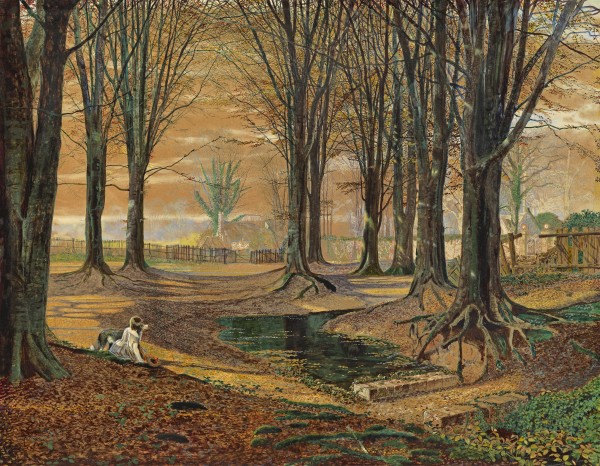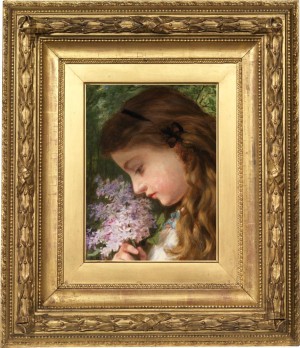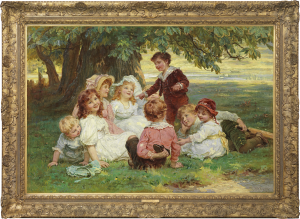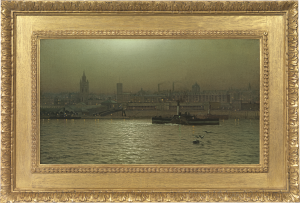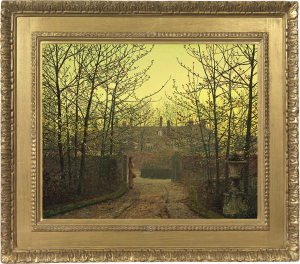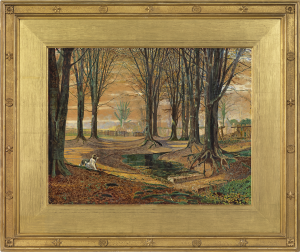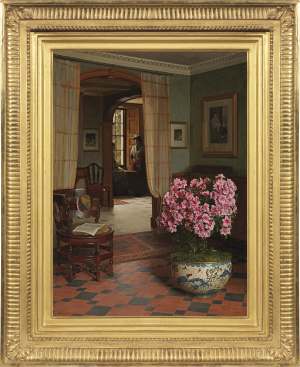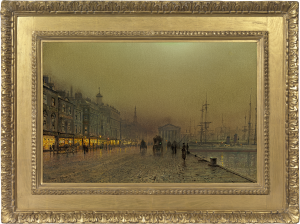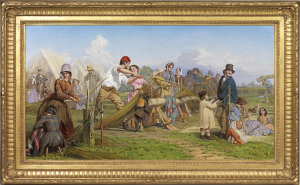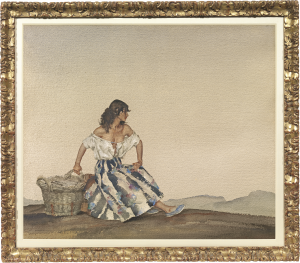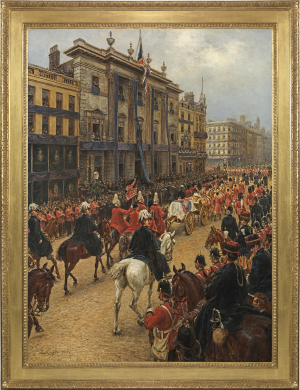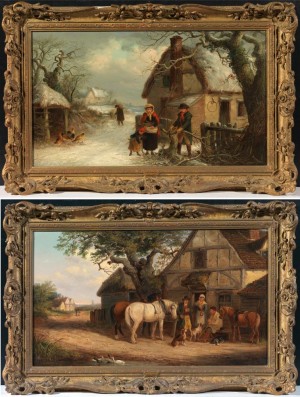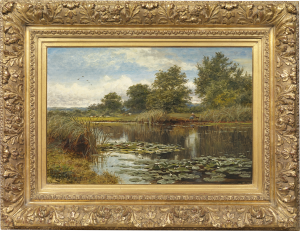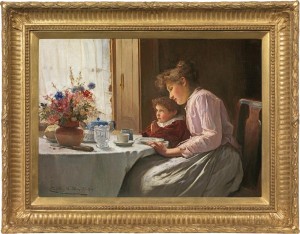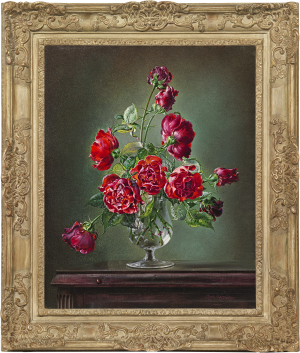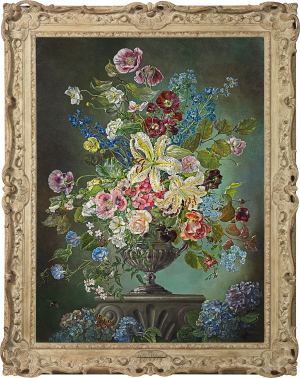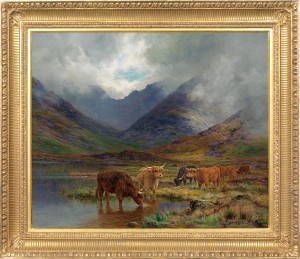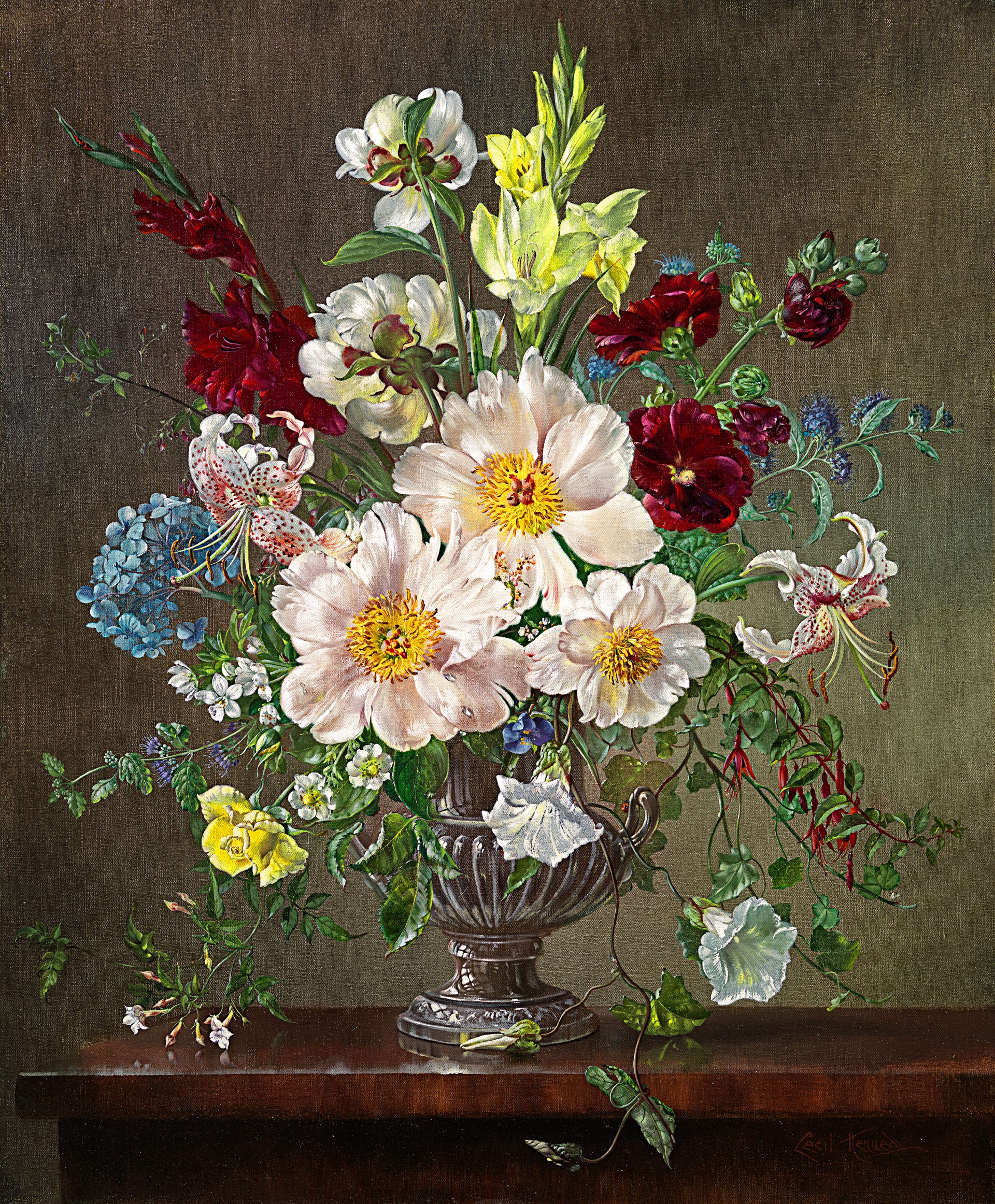John Atkinson Grimshaw
In the autumn's waning glow
Oil on canvas: 12 x 18 (in) / 30.5 x 45.7 (cm)
Signed lower left: Atkinson Grimshaw; inscribed on the stretcher in another hand: _x000D_
In the Autumn’s waning / glow A Grimshaw
This artwork is for sale.
Please contact us on: +44 (0)20 7493 3939.
Email us
JOHN ATKINSON GRIMSHAW
1836 - Leeds - 1893
Ref: CA 145
In the autumn’s waning glow
Signed lower left: Atkinson Grimshaw; inscribed on the stretcher in another hand: In the Autumn’s waning / glow A Grimshaw
Oil on canvas: 12 x 18 in / 30.5 x 45.7 cm
Frame size: 17 ½ x 23 ½ in / 44.4 x 59.7 cm
Provenance:
Private collection, UK
Redolent of autumn, Grimshaw’s golden lane scenes are greatly sought after, the pale, delicate tonality of the setting sun, superbly juxtaposed with the rich, russet warmth of the tree-lined street strewn with fallen leaves. In these serene, nostalgic images, including paintings at the Yale Center for British Art and the Russell-Cotes Art Gallery and Museum, Grimshaw captures the beauty to be found in the fading light of the golden season. As in his early, Pre-Raphaelite works, Grimshaw takes delight in observing the details of nature away from industrial life, carefully revealing the elegant, tapering branches and gilded, furrowed ground. Calligraphic shadows on the lichen-studded fence and wall brilliantly reflect the exquisite tracery of the boughs above, while dappled tufts of grass and moss in the foreground follow the path into the distance and autumn’s waning glow.
JOHN ATKINSON GRIMSHAW
1836 - Leeds - 1893
John Atkinson Grimshaw was a Victorian artist who became famous for his sombre views of the dockyards and his nocturnal scenes of urban lanes with leafless trees silhouetted against the moonlit sky. During his later life, he became a close friend of James McNeill Whistler who admired his work and admitted: ‘I thought I had invented the Nocturne, until I saw Grimmy’s moonlights.’
Born in Leeds, the son of an ex-policeman, Grimshaw first took up painting while he was employed as a clerk for the Great Northern Railway. He married his cousin Frances Theodosia Hubbarde in 1858 and by 1861, he had abandoned his job in order to devote all his time to becoming an artist. In his early work, Atkinson Grimshaw was influenced by John Ruskin’s creed of ‘truth to nature’ and adopted the detailed Pre-Raphaelite technique of the Leeds painter, John William Inchbold. He was also fascinated by the relatively new art of photography and may have used a camera obscura in developing his compositions. Towards 1865, Grimshaw painted many urban scenes in which moonlight and shadows were the most striking features. The towns and docks that he painted most frequently were Glasgow, Liverpool, Leeds, Scarborough, Whitby and London. These works have become his best known though he also painted landscapes, portraits, interior scenes, fairy pictures and neo-classical subjects. Grimshaw painted mostly for private patrons. He exhibited five works at the Royal Academy in 1874, 1880, 1885 and 1886. He also exhibited at Sir Coutts Lindsay’s Grosvenor Gallery in 1885.
By 1870, Grimshaw had become successful enough to move to Knostrop Old Hall, a seventeenth century mansion about two miles from the centre of Leeds, which featured in many of his paintings. He rented another home near Scarborough which he called ‘The Castle by the Sea’, towards 1876. Grimshaw suffered a serious financial disaster in 1879 and had to leave his house at Scarborough. He moved to London from 1885-87 and rented a studio in Chelsea, leaving his family at Knostrop. He returned to Knostrop, where he died in 1893. Several of his children, Arthur Grimshaw (1868-1913), Louis Grimshaw (1870-1944), Wilfred Grimshaw (1871-1937) and Elaine Grimshaw (1877-1970), became painters.
The work of John Atkinson Grimshaw is represented in the Bradford City Art Gallery, the Shipley Art Gallery, Gateshead, the Gloucester Museum and Art Gallery, the Bankfield Museum, Halifax, the Harrogate Museums and Art Gallery, the Ferens Art Gallery, Kingston-upon-Hull, the Huddersfield Art Gallery, Kirklees Metropolitan Council, the Harris Art Gallery, Preston, the Leeds City Art Gallery, the Walker Art Gallery, Liverpool, the Guildhall Art Gallery and Tate Britain, London, the Scarborough Art Gallery, the Wakefield Art Gallery and Museums, the Pannett Gallery, Whitby, the Musée des Beaux-Arts, Brest, France, the Wadsworth Atheneum, Hartford, Connecticut, the Nelson-Atkins Gallery, Kansas City, Missouri, the Minneapolis Institute of Arts, Minneapolis, Minnesota, the Yale Center for British Art, New Haven, Connecticut, the Museum of Art, New Orleans, Louisiana, the Rhode Island School of Design, Providence, Rhode Island in the United States, the Shepparton Art Centre, Welsford, Victoria, Australia and the King George VI Art Gallery, Port Elizabeth, South Africa.

